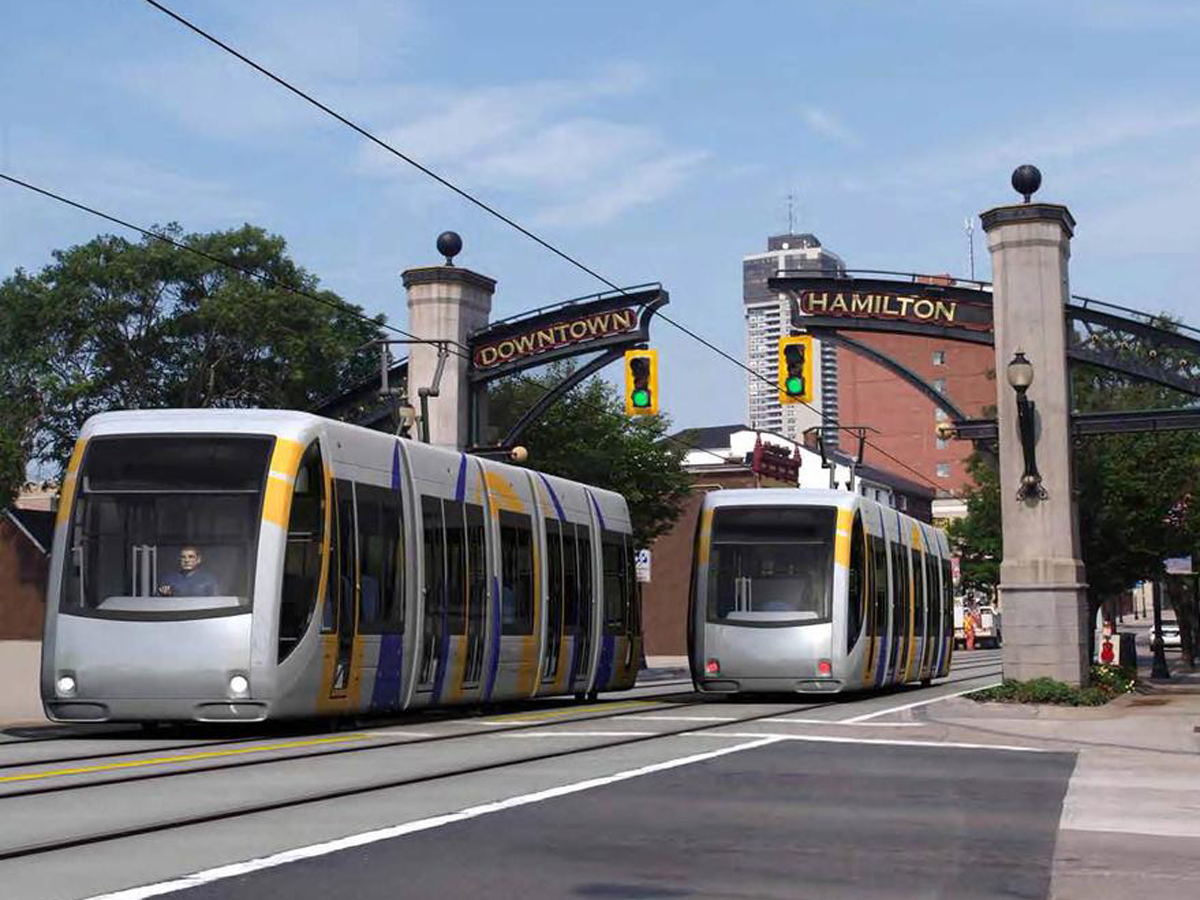Who will operate Hamilton’s Light Rail Transit vehicles is a point of contention, so much so that it derailed the initial B-Line LRT agreement.
Hamilton City Council voted in October 2017 to demand the provincially funded LRT be operated by Hamilton’s local public transit agency, the Hamilton Street Railway.
The resulting delay caused a final LRT agreement to not be signed prior to the 2018 provincial election.
The Ontario Progressive Conservative Party won the 2018 provincial election, and cancelled Hamilton’s LRT the following year.
In May 2021, the federal government committed to fund 50 percent of five light rail projects in the Greater Toronto-Hamilton Area, including Hamilton’s B-Line. This revived the project, which is now moving forward.
The issue of who will operate Hamilton LRT line remains unresolved.
A new ruling from Ontario’s Labour Relations Board, involving a LRT line in Toronto, indicates Metrolinx can choose to contract private operation of LRT lines without violating the successor clauses in local transit union contracts.
Labour Relations Board Vice-Chair Patrick Kelly rejected union arguments that by replacing bus service along Eglinton Avenue in Toronto, the new provincially built LRT line is a successor service required to use TTC union employees.
“Nothing in the hands of Metrolinx (or Crosslinx or Bombardier) can be traced to the TTC, except arguably the work itself (of providing transit service) to which, as the jurisprudence makes clear, bargaining rights do not attach,” ruled Kelly.
The Eglinton LRT is the first LRT built by Ontario’s Metrolinx agency. Hamilton’s LRT will be constructed by Metrolinx using a similar private partnership model.
The TTC is operating the vehicles, but Metrolinx has contracted capital and vehicle maintenance to a private contractor, Bombardier Transportation.
The union representing TTC maintenance workers, Amalgamated Transit Union Local 113, filed a grievance against both the TTC, the Ontario Government’s Metrolinx, and the Crosslinx private partnership.
ATU 113 sought a declaration that the successor rights in its collective agreement with the TTC were violated by Bombardier conducting maintenance work on the Eglinton LRT vehicles. They argued that the LRT is a replacement service to existing TTC bus operations, and therefore the successor clauses of their collective agreement apply.
Vice-Chair Kelly determined Section 16(2) of the Metrolinx Act permits Metrolinx to operate local transit service, that while the Eglinton LRT was a previous idea of both TTC and City of Toronto planning, it is independent of the TTC.
“Metrolinx has not drawn upon the life blood of the TTC,” Kelly wrote. “Whatever benefit Metrolinx may have derived from the TTC’s initial planning and pre-work on the Eglinton Crosstown LRT, it does not constitute TTC’s business or part of its business or, metaphorically, its lifeblood.”
“Metrolinx has, independently of the TTC, overseen the creation of a transit system. Nothing in the hands of Metrolinx (or Crosslinx or Bombardier) can be traced to the TTC, except arguably the work itself (of providing transit service) to which, as the jurisprudence makes clear, bargaining rights do not attach,” Kelly ruled.
The contract between the City of Hamilton and ATU Local 107 mirrors the successor rights language of the agreement between the Toronto Transit Commission and ATU 113.
Effectively, this ruling means Metrolinx can choose who operates and who maintains Hamilton’s LRT.
Production Details v. 1.0.0 Last edited: July 6, 2022 Author: Joey Coleman Edit Record v. 1.0.0 original version


So to be clear Joey the language in Atu107 collective agreement is significantly different than that of ATU113. Ultimately this decision will lay with City Council and the Taxpayers who will be funding and supporting this project. We have seen far too many failures with the 3Ps and I believe that a Hamilton is prepared to support a fully Publicly owned, operated and maintained LRT system that allows local control in all aspects of our Public Transit System that will drive this City forward as it has for more than a 125 years.
Eric,
Successor rights are similar between the contracts, fully agree the language differs but in front of the Labour Relations Board the similarities will result in the same outcome.